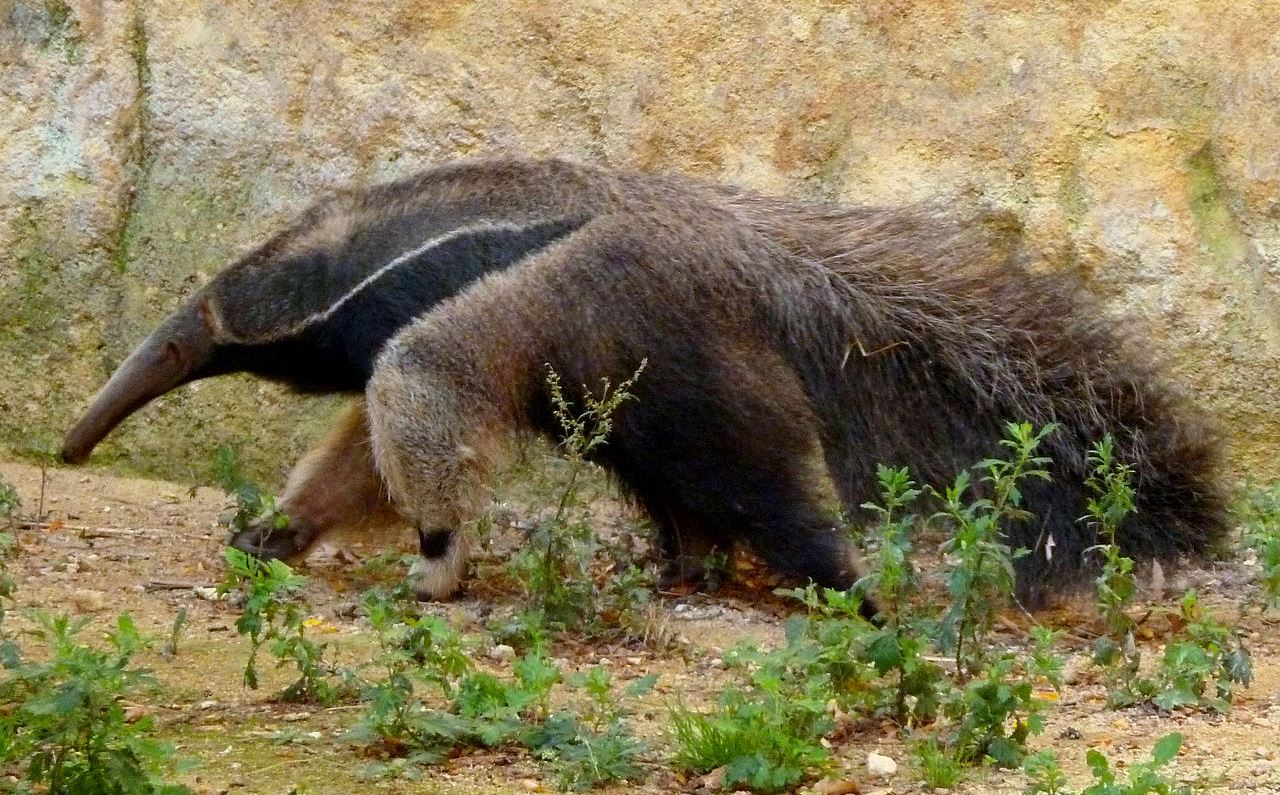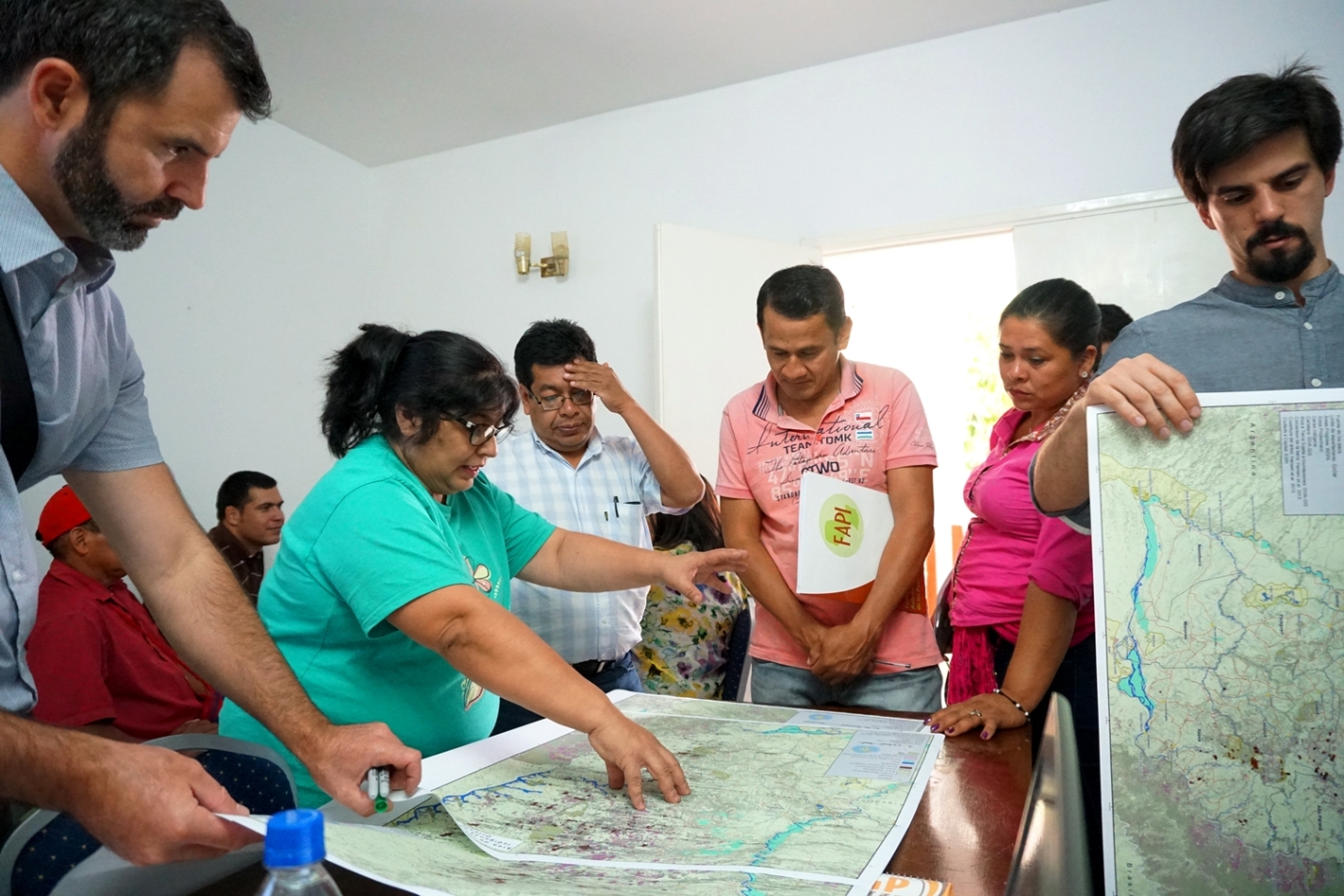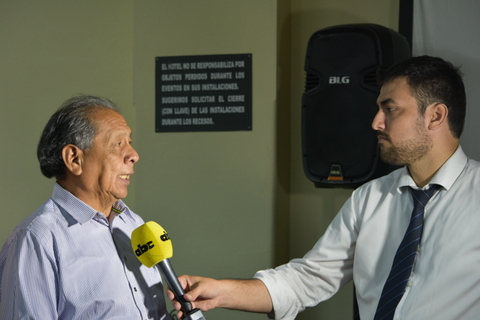- Tierras Indígenas’ advanced mapping technology is bringing South America’s Chaco ecosystem into the spotlight and allowing indigenous groups to digitally map out their territories in an effort to protect their forests.
- Mapping indigenous land rights and forest change requires collaboration among various stakeholders and standardization of data collection, using clear protocols, precise data, and participatory management.
- By accessing the Global Forest Watch and Tierras Indígenas platforms, users can view forest change in particular areas within the Gran Chaco ecoregion, as well as the legal status of indigenous land claims to those same areas.
Dwarfed both in size and fame by the Amazon rainforest, the Gran Chaco, South America’s second largest vegetation complex, is a diverse mix of thorny dry forest and palm savannahs stretching across the far reaches of Bolivia, Brazil, Argentina, and Paraguay. It is home to over 150 mammalian species, including the giant armadillo and giant anteater (both currently listed as Vulnerable by the IUCN’s Red List of Threatened Species).

The Gran Chaco is also home to roughly 250,000 indigenous people, stemming from around twenty different ethnic groups, who are embroiled in a bitter battle to lay claim to their ancestral forested lands – before they disappear.
Mapping deforestation and the Gran Chaco Americano
The forests and savannahs of the geographically diverse Gran Chaco Americano have been suffering a largely silent extinction – until recently.

Advanced mapping technology is bringing the Chaco into the spotlight. Indigenous groups are digitally mapping their territories in an effort to protect their forests from the encroachment of cattle ranching and soy farming, which threaten both wildlife and indigenous livelihoods.
In Paraguay, a game-changer for indigenous communities has been Tierras Indígenas (TI), an interactive map and online platform launched by Paraguay’s Federación por la Autodeterminación de los Pueblos Indígenas/Federation for the Self-Determination of Indigenous Peoples (FAPI) on November 28, 2017.

The TI platform combines Global Forest Watch’s digital Map Builder software and data and expertise from both Global Forest Watch (GFW) and thirteen different indigenous groups, the platform enables interested groups to map the extent and legal status of their lands and resources.
The Map Builder tool allows users to use the GFW data and tools to create their own interactive digital map using specified data layers and personalized styling, which can be shared over social media and submitted to the map gallery.
The software builds on GFW’s extensive data and tools to document land use change and deforestation, using interactive layers to display tree cover, land use types by industry, and other aspects of forest change on a global scale. By accessing these tools, TI users can view forest change (deforestation, forest growth, and reforestation) in particular areas within the Gran Chaco region, as well as land claims made to those areas.
The Map Builder software in action. The Map Builder section begins at 6:45. Video courtesy of the Global Forestry Watch
Linking indigenous land rights and environmental welfare
Research shows how “tenure-secure” indigenous lands demonstrate lower rates of deforestation and can forestall conflict by demonstrating established land claims.
“Where indigenous people have rights to their land, they’re really good stewards of that land,” said Ryan Sarsfield, Latin America Commodities Manager with Global Forest Watch at the World Resources Institute. “Our research in the Amazon Basin shows that average annual deforestation rates are two to three times lower within documented indigenous forests than on similar lands that are not formally recognized by the state.”
Sarsfield described in an email the “really dynamic” changes in land use in Paraguay over the last couple of decades. “There’s been an expansion of soybeans in the east, and then movement towards expansion of cattle in the west, in the Chaco region,” he said. “And that has resulted in an explosion of deforestation, explosion of the cattle industry, a lot of which is going for export. And in the process, there’s been a lot of expansion of cleared areas within existing ranches and a lot of buying and selling of ranches, and indigenous people have been pushing back for their land rights in many of these places.”


According to Don Hipólito Acevei, President of FAPI, the groups collected tribal lands data through a series of internal coordination meetings.
“We contracted, thanks to the support of USAID and WRI, experts in GIS, who received copies of the titles and plans of the communities’ insured lands,” Acevei told Mongabay. “In the case of indigenous communities with claims procedures, their members brought copies of their efforts where the data on the property claimed were stipulated. The work was carried out through coordination of the platform…by FAPI, but with the participation of several indigenous organizations, also civil society organizations and international NGOs…” (Quote translated from Spanish by the author.)
Sarsfield and Acevei described how collaboration and standardization using clear protocols, precise data, and participatory management were key to making the smartphone-accessible map.

“The platform cannot guarantee the validity of regional territorial rights,” Acevei explained, “but I think it can serve as an inspiration so that the information is used to connect us with other [indigenous] peoples, since the borders of the countries are dividing the peoples. The people know where their ancestral territories are located, and through the platform they can see the location of the lands they have [already] legalized and they lands they claim. This information is also of vital importance for the State and for regional and local governments.” (Quote translated from Spanish.)
While several of Paraguay’s indigenous groups have taken to the courts to challenge forced displacement from their homes by cattle ranching and agricultural development, there is hope that the process of mapping territorial claims using the Tierras Indígenas platform would prevent transgressions from happening in the first place.
The interactive platform informs not only indigenous community members about their territorial rights, but also members of the government and the private sector. It is publicly accessible, which means that companies and government institutions can review land claims prior to launching prospective activities in the region.

“If land is accurately represented,” Sarsfield noted, “or at least the confusion around titling is represented, and indigenous people are better able to defend their claims and be transparent about their claims, there’s going to be better outcomes for indigenous people and for stewardship of the environment that they carry out.”
It’s still too early to analyze the effects of the Tierras Indígenas platform on forest conservation. But the project has already helped to establish transparency and legitimacy for indigenous land claims and has helped to increase visibility and community development for indigenous groups.
According to Acevei, “[The project] has impacted [indigenous communities] very positively because there was no map of indigenous communities that could show secured and claimed indigenous lands. The communities are [now] visible, and so are their rights. Also, companies and other actors will be able to show and talk about possible projects that can impact the lives of communities.” (This quote has been translated from Spanish by the author.)

“We had groups in the private sector who developed risk models for Paraguay, and they wanted to be able to fit the data into their risk models as part of their sourcing criteria,” Sarsfield said. “There was a pre-existing demand for data that could be used for those in the private sector who really are making an effort to avoid conflict involved in indigenous lands. That data’s already in their hands, and we filled that need by having the data available in the first place.”
One of the challenges of implementing the platform, according to Sarsfield, was being able to accurately and precisely display disputed land claims so that users – from government officials to corporations and members of civil society – could accurately interpret its status. The platform, launched in November 2017, is being continuously updated with new data.

Conserving the Chaco
When asked about how the platform can contribute to the conservation of the Gran Chaco ecoregion, Acevei replied, “The biggest challenge is how to protect the territories and their resources in a space where land use change for economic activity is being planned. For this reason, the real importance of indigenous lands to maintain forests and their resources is demonstrated through the platform. And you can also see where they are claiming lands to be legalized by the State as soon as possible, because it is a human right of indigenous communities.” (Quote translated from Spanish by the author.)
FEEDBACK: Use this form to send a message to the editor of this post. If you want to post a public comment, you can do that at the bottom of the page.













